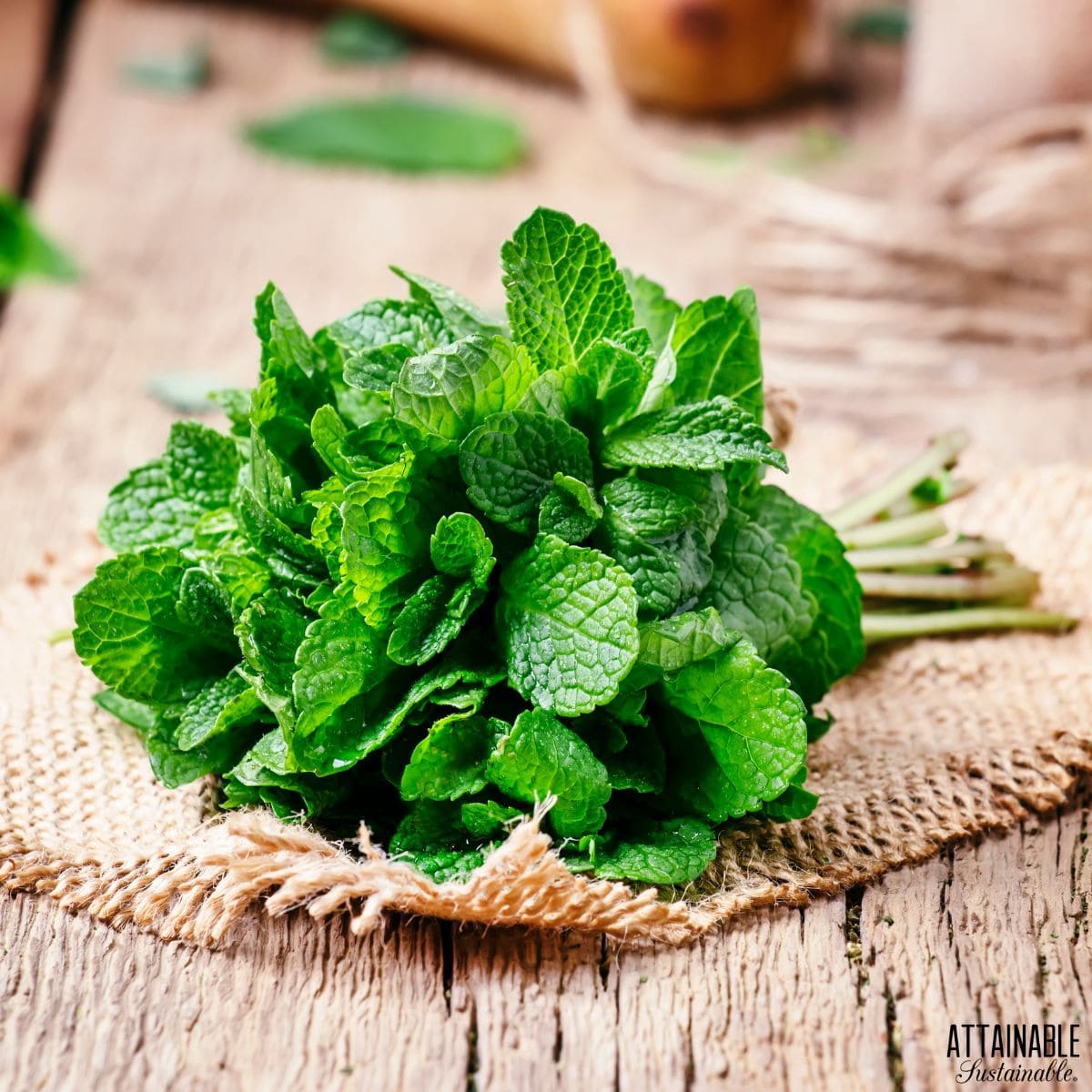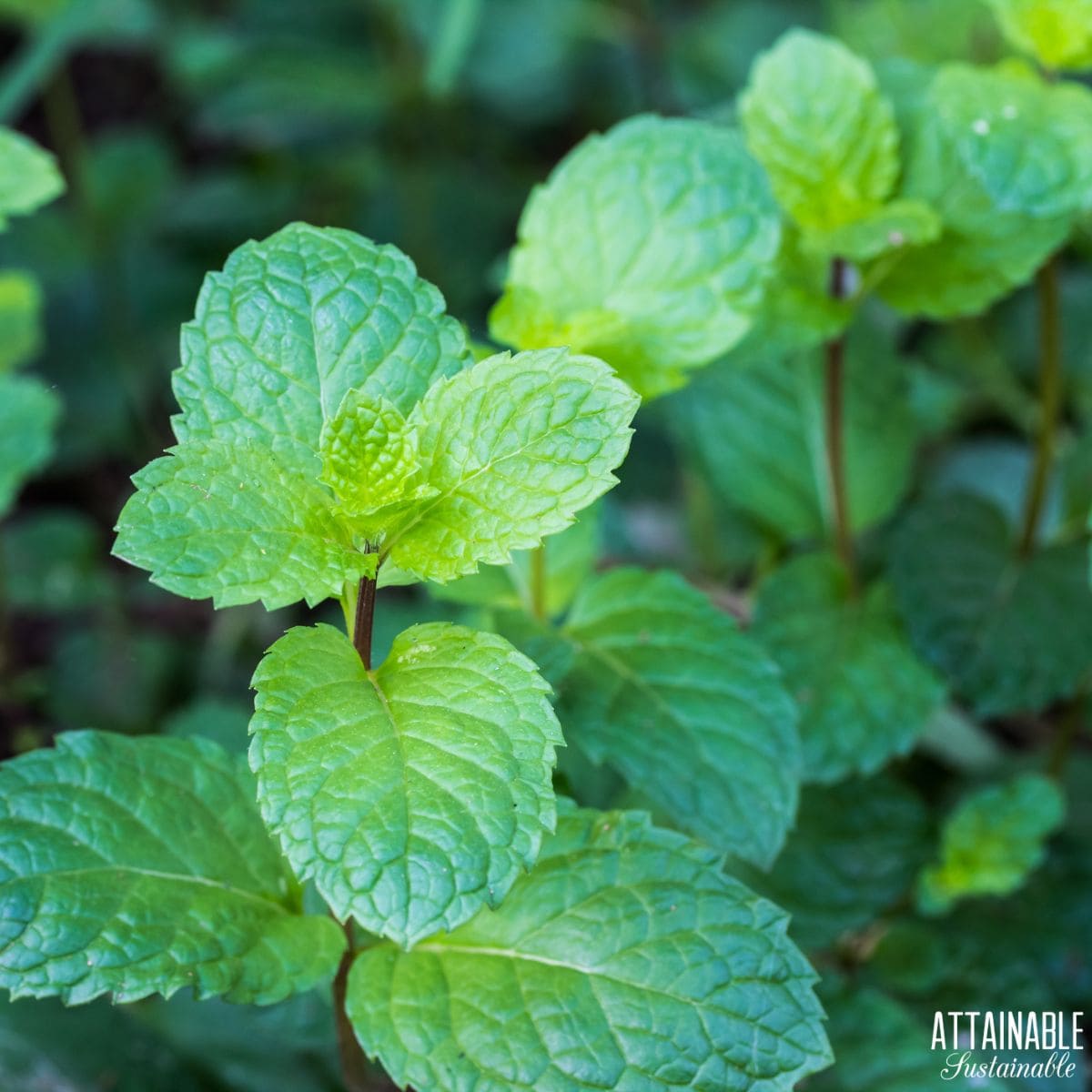Growing mint in your garden is easy (almost TOO easy)! There are ways to control the spread of your garden mint so you can enjoy all of the flavors and benefit this plant brings without the hassle. Learn how to grow, harvest, and use mint for all of its refreshing goodness.
For more herb-y goodness, learn how to grow basil so you can harvest it all season long!
Contributed by Jodi Torpey, author and Master Gardener.
From tea to toothpaste, mint is one of the most popular flavorings in the world. Used for centuries as an aromatic herb, mint is also a beautiful plant to add to your garden. Besides their upright habit and nice green leaves, mint plants produce tiny flowers that attract pollinators, especially honeybees.
Mint can make itself at home in traditional herb gardens and around vegetable beds, but plants also add a nice touch to flower gardens.
In cold-weather climates, some mint varieties grow as tender annuals, but mint is a perennial plant. Although gardeners may shy away from planting mint, there are ways to tame its spreading nature.
Grow Some Greens!
Ready to grow fresh greens, no matter WHERE you live? Sign up for my
FREE quick-start guide and start growing some of your own food!
If you’re searching for a ground cover plant that will grow with little effort, mint is it. Just be mindful that mint plants grow by sending out runners that can easily take over a garden space. To prevent the mint from overwhelming the garden, plant it in its own garden area or grow it in a place where other plants don’t grow well.
Another way to control mint’s spreading habit is to plant in a raised bed or container, whether in the garden or on the patio. Clipping flowers before plants go to seed will also prevent plants from self-sowing.
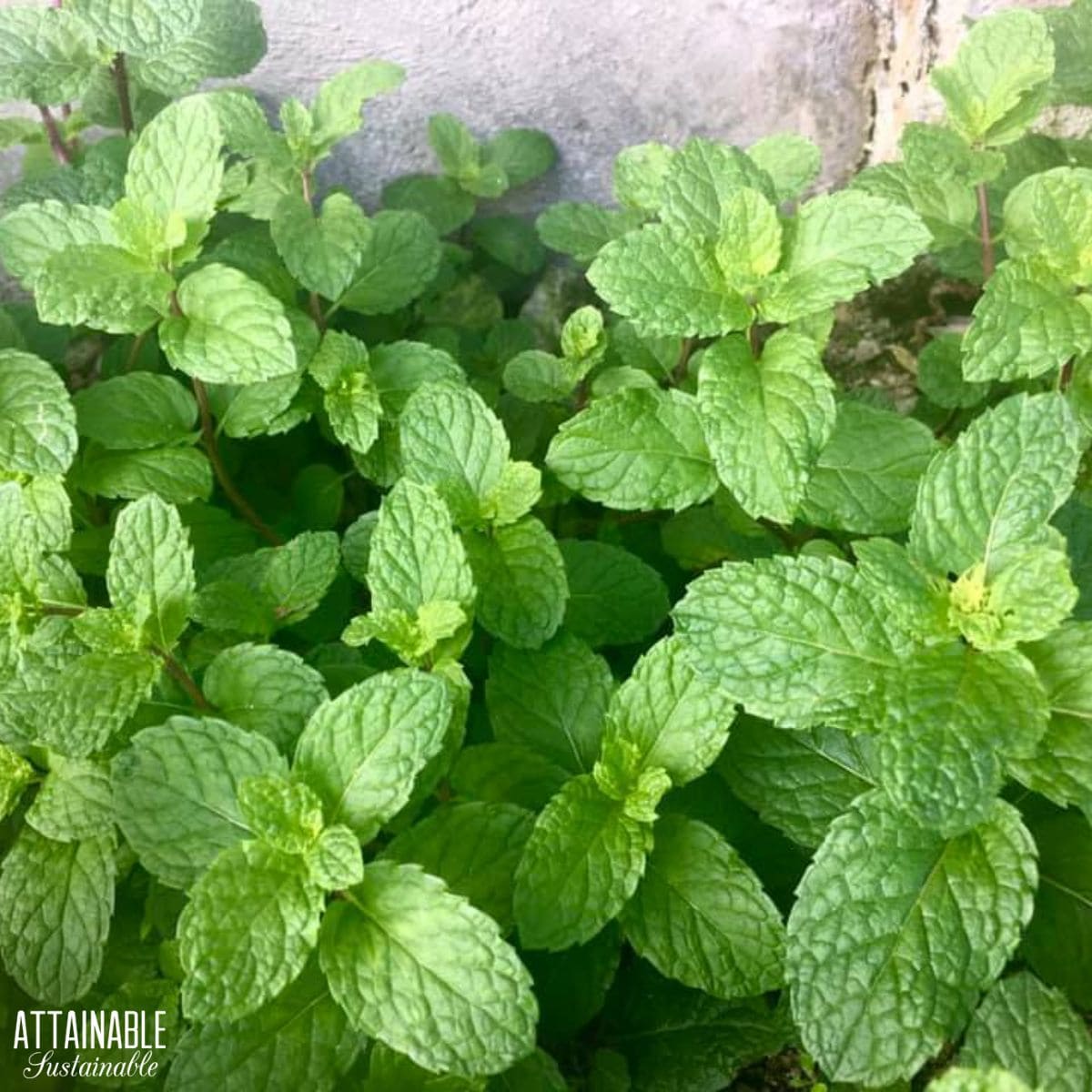
Mint grows easily and it’s best to keep it contained
Popular Types of Mint Plants
The most familiar mints to grow in home gardens are peppermint and spearmint, but there are many more mint types to plant and enjoy. If you’re not sure if a plant is from the mint family, check the shape of its stem. All mints have square stems.
Here are four of the most popular types of mint to grow in your garden:
Spearmint is the mint variety used for drinks like mint juleps and mojitos. This mint features textured green leaves and lilac, pink or white flowers. Grows to 30 inches tall under the right conditions.
Peppermint has a strong familiar scent and lighter green smooth leaves with lilac-pink flowers. Can grow to 24-30 inches.
Apple mint is known for its apple-scented, fuzzy gray-green leaves and small white flowers. Apple mint grows to 24 inches.
Pineapple mint features bright green and white variegated leaves that have a strong fruity scent. Plants grow to 24 inches tall.
Chocolate mint has everyone’s favorite flavor tucked right into its leaves. This mint plant grows up to 24 inches high and flowers in purple.
New to gardening? Limited on space? The 5-Gallon Garden gives you the skills you need to grow food in the space you have. Get started with your garden today!
Good Mint Companion Plants
Consider planting mint alongside colorful annuals as well as perennials. Gardeners often plant their favorite mint with other Mentha varieties or with culinary herbs like oregano, basil, and parsley.
How to grow mint
Mint is one of the easiest plants to grow because it requires little care. It can thrive in moist, well-amended soil, but it’s not fussy. Mint can grow in difficult soil conditions.
It’s easy to get mint established in the garden, whether by planting transplants or seeds. Plant mint in warm weather, when the timing is right for planting other herbs in the garden.
Select your garden spot in full sun to partial shade. Dig a planting hole and place the mint plants in the soil as deep as they are in their containers. Firm soil over the roots and water in. Plants will spread so space them about 12-18 inches apart or plant one plant in a large container.
If planting mint seeds, sow them ¼ inch deep and thin them once they sprout to the desired spacing.
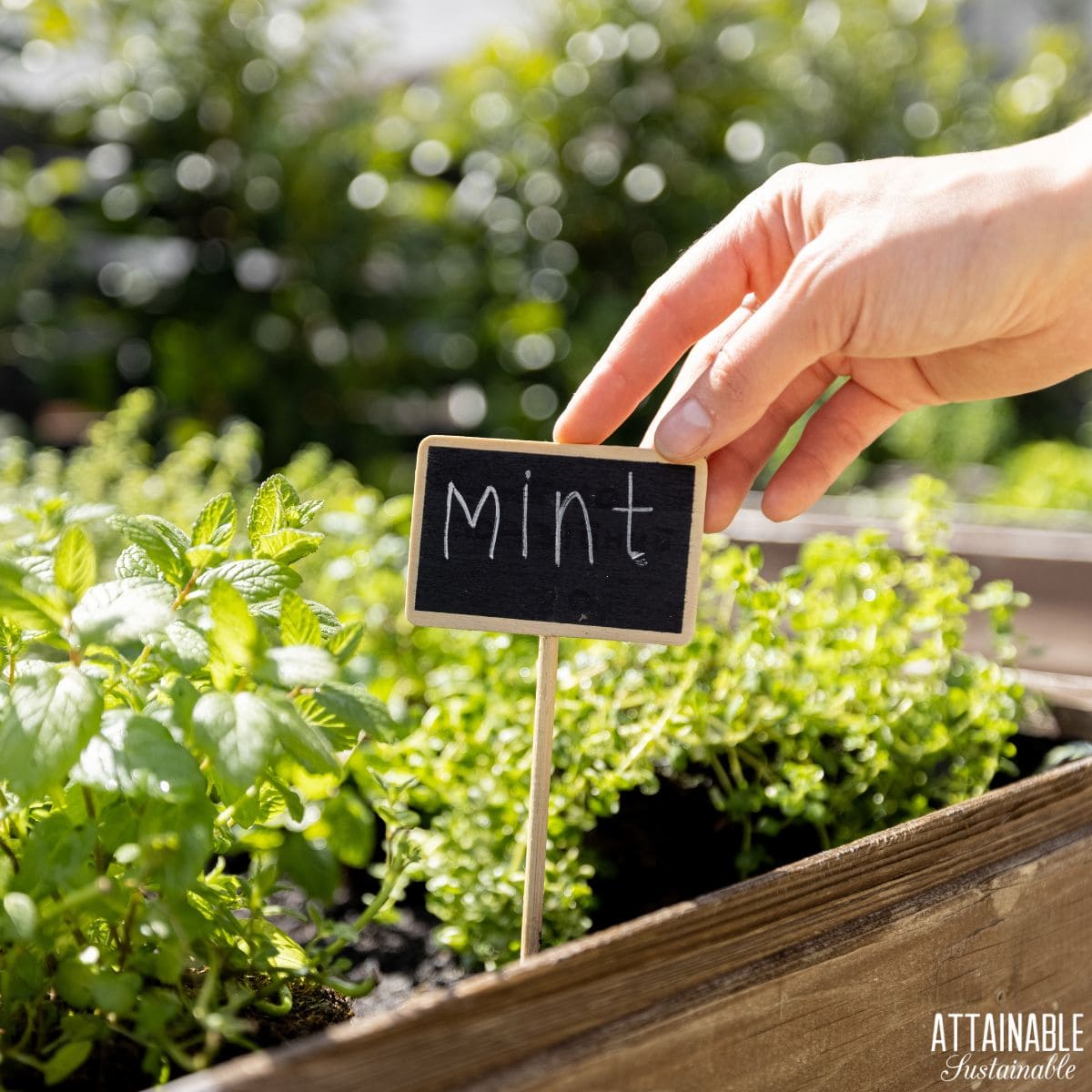
Mint does well growing in a garden bed
Requirements for Growing Mint
Soil requirements
Mint plants thrive in fertile, moist soil, although plants can become drought-tolerant once established. For a thriving mint crop, amend the soil so it’s well-draining before planting.
Light requirements
Locate mint plants so they receive at least several hours of sun a day, although plants can grow in semi-shaded spots.
Fertilizer and water requirements
Dig in slow-release fertilizer before planting to give plants a good start. Avoid overfertilizing during the growing season to keep plants healthy.
Water deeply but infrequently. Overwatering can lead to root and leaf diseases. Too little water can be a problem, too. Water if plants start to show signs of wilting or when the top few inches of soil are dry.
Prevent problems with growing mint
The biggest complaint gardeners have with mint is it spreads where they don’t want it to grow. Plants can be invasive and crowd out other garden plants, so consider how to keep mint from taking over before planting.
Avoid overwatering mint, because excess water can promote root and leaf diseases like rust. Rust shows up as small, whitish spots that turn red or brown on the undersides of leaves. Prevent rust by using drip irrigation or watering only at the soil level to keep leaves dry.
Underwatering can also be an issue in hot and dry weather. Watch for plants with leaves that wilt and water as needed.
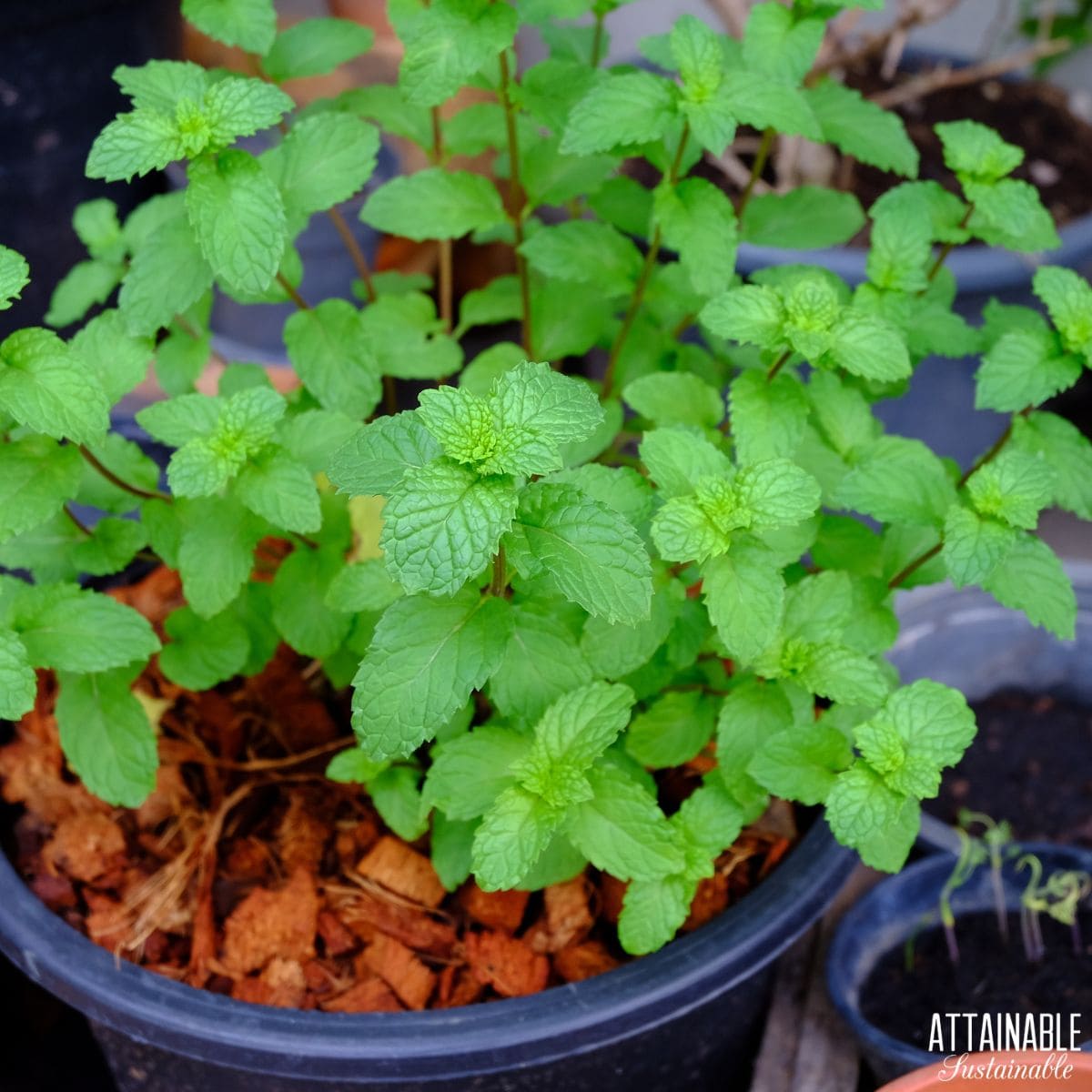
Container planting is a great way to contain mint
How to grow mint plants in containers
Mint plants make beautiful container plantings, especially if you select a large container for one mint plant. Depending on the mint variety, the plant could grow to over 30 inches tall and then bloom with tiny flowers.
Be sure to select a container with drainage holes in the bottom to keep roots healthy. Fill the container with potting mix that also includes a slow-release fertilizer. Moisten the soil before planting.
For the fastest results, find a healthy mint transplant and place it in the container at the same depth it was in its container. Gently firm the soil around the roots and water in. Keep soil moist until the plant starts to grow and water only when the top inch of soil begins to dry.
Follow the same instructions for planting mint by sowing seeds. Thin the plants to give them plenty of room to grow.
Harvesting Mint
Mint leaves can be clipped or pinched from plants as soon as they’re large enough to use. Choose leaves that are evenly colored with no sign of wilting or insect damage. You can store small bunches of fresh mint in a glass of water, just like flowers. Place in the fridge or on the counter and use leaves as soon as you can.
For larger kitchen uses, cut stems in summer before plants begin to flower. Snip a stem several inches from the soil level. Plants will continue to grow, and you might be able to get several harvests before the end of the season.
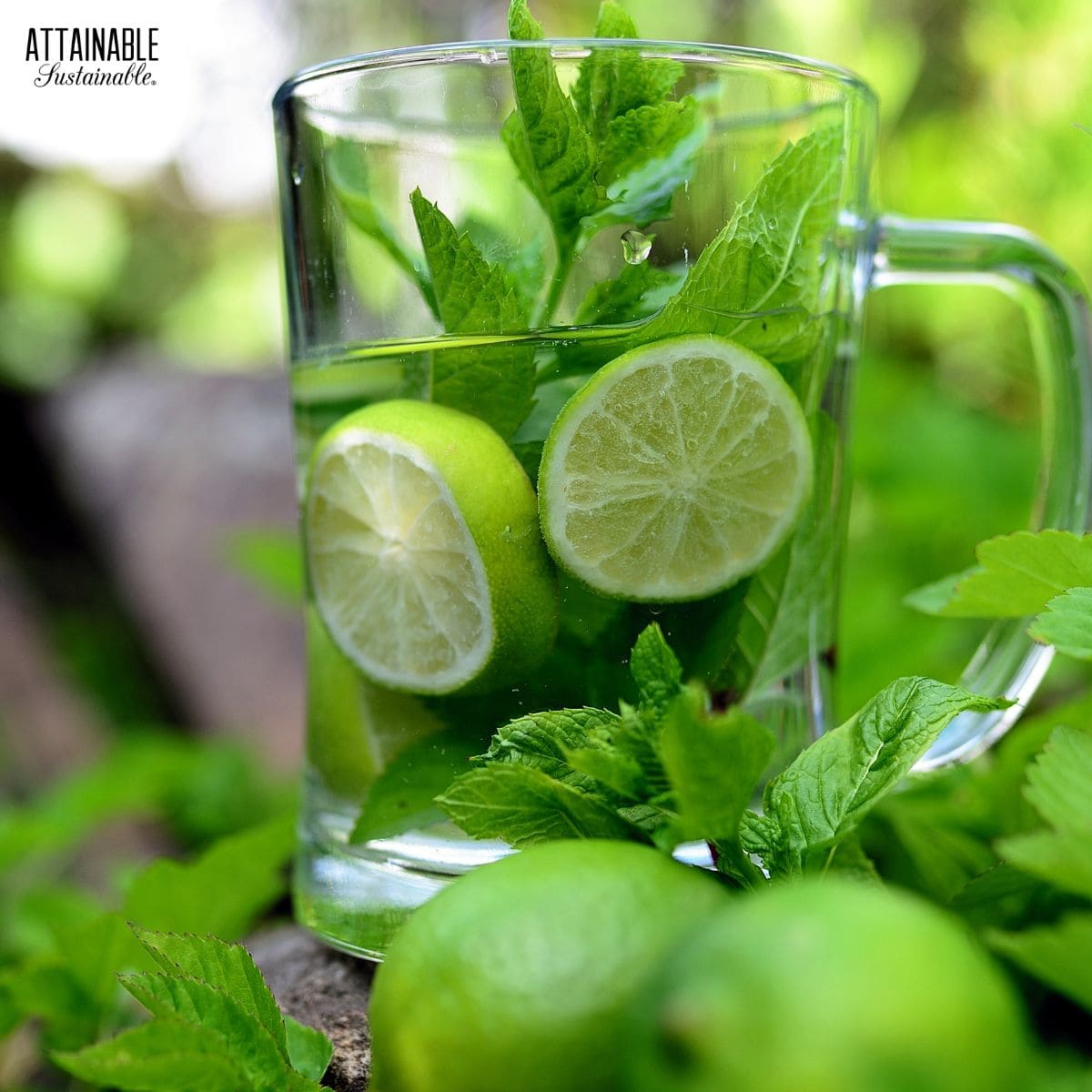
Garden fresh mint is perfect for making mojitos
How to use mint in the kitchen
Spearmint is one of the most popular mints used to sweeten all kinds of recipes, but other mints can be used fresh and dried. Favorite uses include mint sauce, mint jelly, mint juleps, and mojitos. Mint is also used to flavor candies, ice cream, and liqueurs and to sprinkle on fruit salads.
Mint is also delicious when used to flavor savory Asian dishes, to add to a salad dressing for fresh tomatoes, or to use as a refreshingly different ingredient in pasta sauce.
If you have a plentiful mint harvest, be sure to dry mint leaves to store and use for mint tea or to sprinkle into recipes through the winter.
Growing Mint from Cuttings
While plants are still supple and growing, take small cuttings of mint to start a new plant. Cut several inches from the top of the plant. Remove lower leaves and place in a container of water or moist potting mix.
The cutting will begin to root to create a new plant to use in the garden or on a windowsill.

